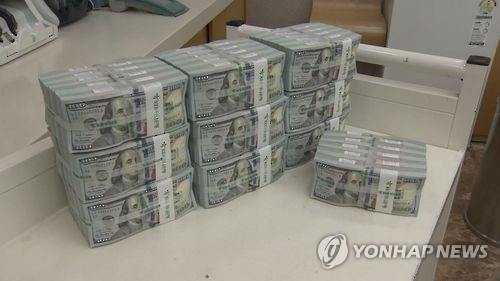South Korea's top financial regulator said Monday that it would mandate local banks to set aside more foreign exchange reserves starting next year to better deal with any possible massive foreign capital outflows.
The local banks are required to raise the foreign exchange liquidity coverage ratio to 80 percent in 2019 from 60 percent in 2017, the Financial Services Commission said.

The liquidity coverage ratio is measured as high-quality liquid foreign assets to projected net cash outflows over 30 days, meaning that banks are required to hold necessary foreign currency assets on hand to get over short-term liquidity disruptions.
The planned regulation is widely seen as the country's pre-emptive attempt to ensure long-term stability of the local banks at a time when there is a possibility of foreign capital outflows.
Still, the financial regulator said that foreign banks operating in South Korea and the Export-Import Bank of Korea will not be subject to tighter liquidity regulations. Also excluded from tighter liquidity regulations are local banks with foreign currency debts of less than US$500 million and foreign currency debts accounting for less than 5 percent of their total debts.
It said the Korea Development Bank, a state-run policy lender, will be subject to looser standards with the required ratio coming in at 60 percent in 2019.
In the midst of the 2008 global financial crisis, South Korean banks were less capable of dealing with a sudden foreign outflow although they had fully complied with the foreign currency liquidity regulations in force at the time, according to the government. (Yonhap)




![[Exclusive] Hyundai Mobis eyes closer ties with BYD](http://res.heraldm.com/phpwas/restmb_idxmake.php?idx=644&simg=/content/image/2024/11/25/20241125050044_0.jpg)
![[Herald Review] 'Gangnam B-Side' combines social realism with masterful suspense, performance](http://res.heraldm.com/phpwas/restmb_idxmake.php?idx=644&simg=/content/image/2024/11/25/20241125050072_0.jpg)

